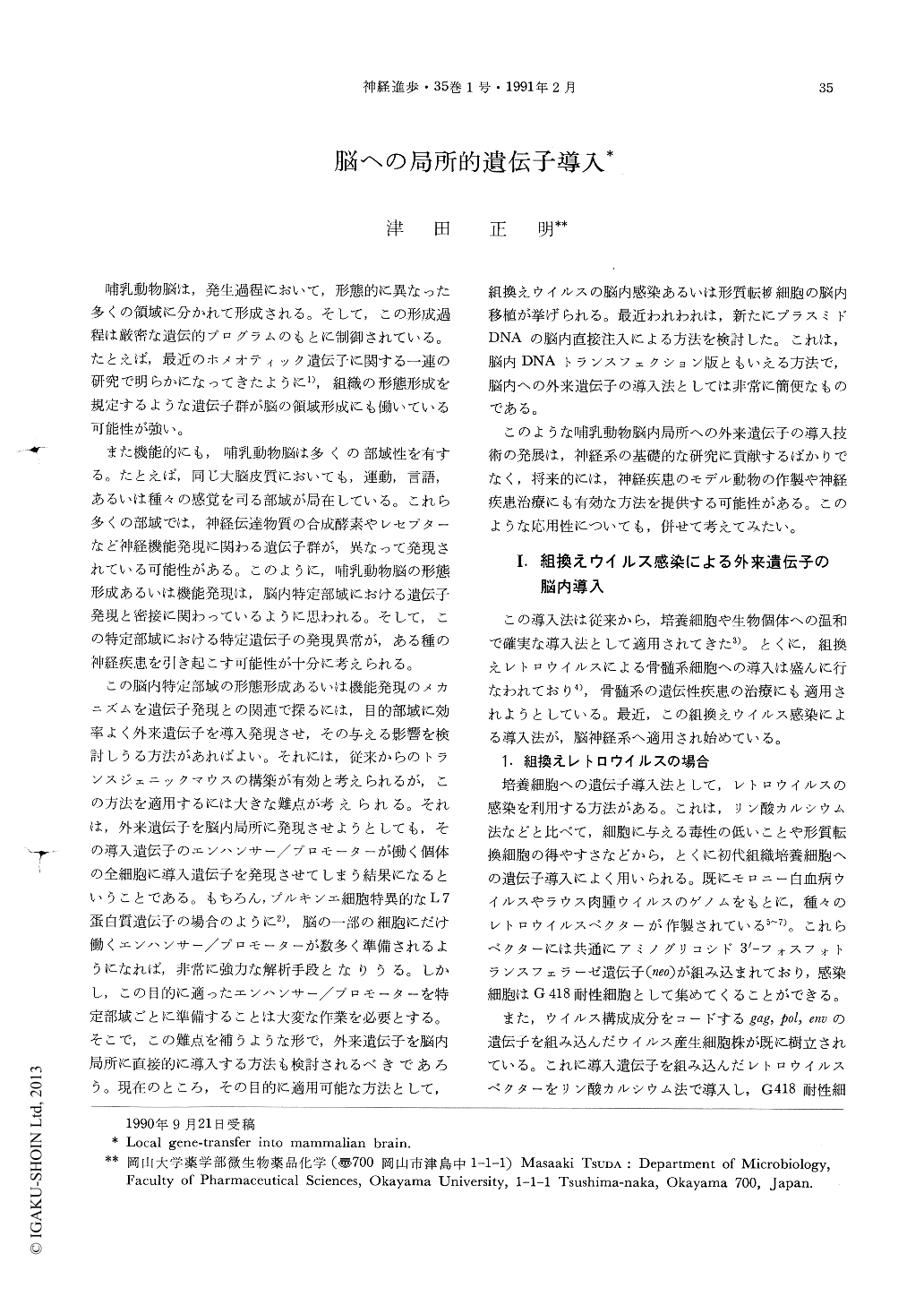Japanese
English
- 有料閲覧
- Abstract 文献概要
- 1ページ目 Look Inside
哺乳動物脳は,発生過程において,形態的に異なった多くの領域に分かれて形成される。そして,この形成過程は厳密な遺伝的プログラムのもとに制御されている。たとえば,最近のホメオティック遺伝子に関する一連の研究で明らかになってきたように1),組織の形態形成を規定するような遺伝子群が脳の領域形成にも働いている可能性が強い。
また機能的にも,哺乳動物脳は多くの部域性を有する。たとえば,同じ大脳皮質においても,運動,言語,あるいは種々の感覚を司る部域が局在している。これら多くの部域では,神経伝達物質の合成酵素やレセプターなど神経機能発現に関わる遺伝子群が,異なって発現されている可能性がある。このように,哺乳動物脳の形態形成あるいは機能発現は,脳内特定部域における遺伝子発現と密接に関わっているように思われる。そして,この特定部域における特定遺伝子の発現異常が,ある種の神経疾患を引き起こす可能性が十分に考えられる。
During the development of the mammalian central nervous sysem (CNS), a large number of brain-specific genes are expressed in a developmentally regulated fashion in brain, a process which is thought to be closely related to the formation of the CNS and the expression of nervous functions. To elucidate this process in relation to the expression and action of brain-specific genes in brain cells, it is desirable to develop a method for introducing foreign genes into the specified areas of brain of living animals. For this purpose, production of transgenic mice is thought to be mostly applicable, but efforts to obtain appropriate control elements to express the foreign genes in a specified area of brain would be needed. Instead of production of transgenic mice, two methods, infection of recombinant viruses and transplanta-tion of transformed cells, are expected to be applicable for introducing foreign genes into specified areas of brain. Infection of recombinant viruses to the brain cells is now using for marking cell lineages of brain cells in vivo, but does not seem to be suitable for expressing foreign genes effectively in a restricted area of brain. Transplantation of transformed cells into brain is suitable for expressing genes coding secretory peptides like growth factors in a restricted area of brain. So far, established cell lines have been used as donor cells, which might cause abnormal proliferation in brain after transplantation. Recently, we have succeeded in transplanting cultured mouse cerebellar cells infected with recombinant retroviruses into the cerebellum of adult mice and expressing introduced gene-products in the host cerebellum for at least 3 weeks after transplantation. However, these methods require laborious experi-mental processes to prepare recombinant viruses or transformed cells prior to transferring foreign genes into brain.

Copyright © 1991, Igaku-Shoin Ltd. All rights reserved.


